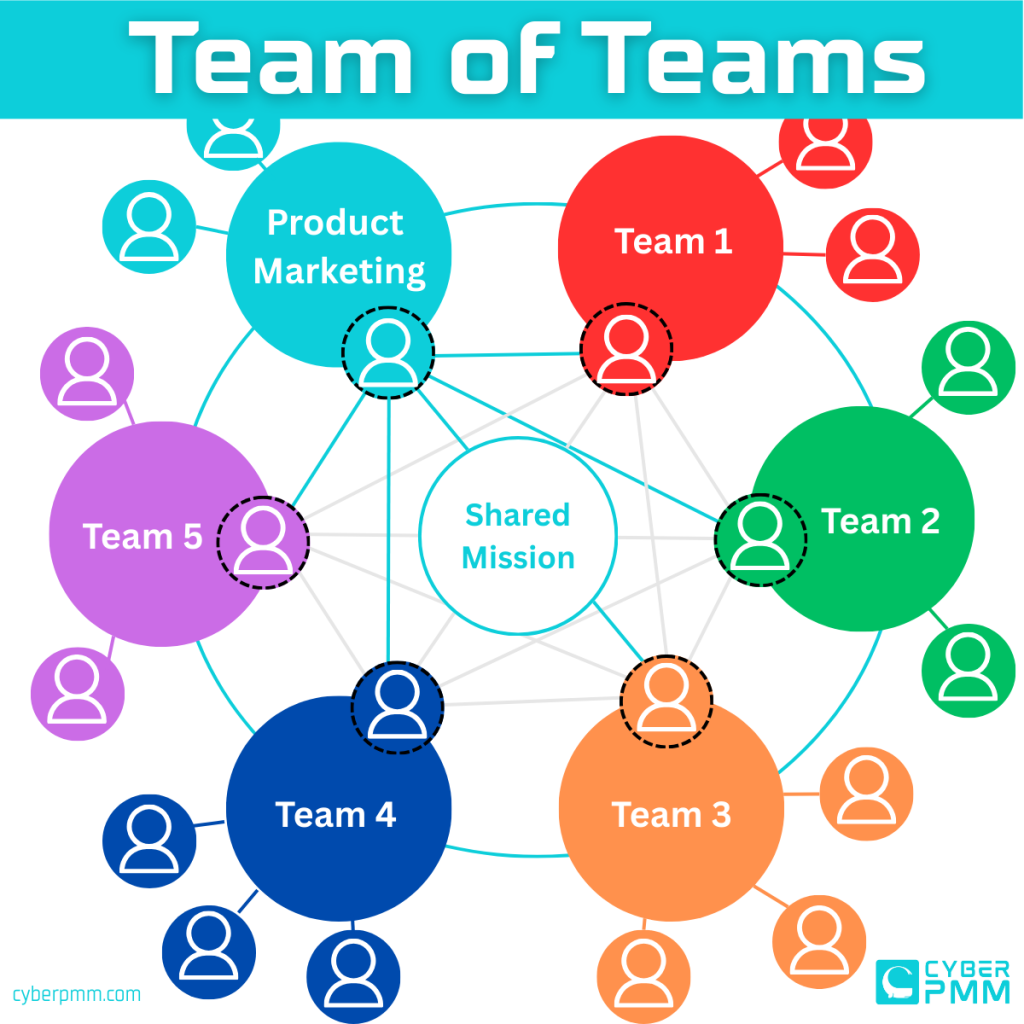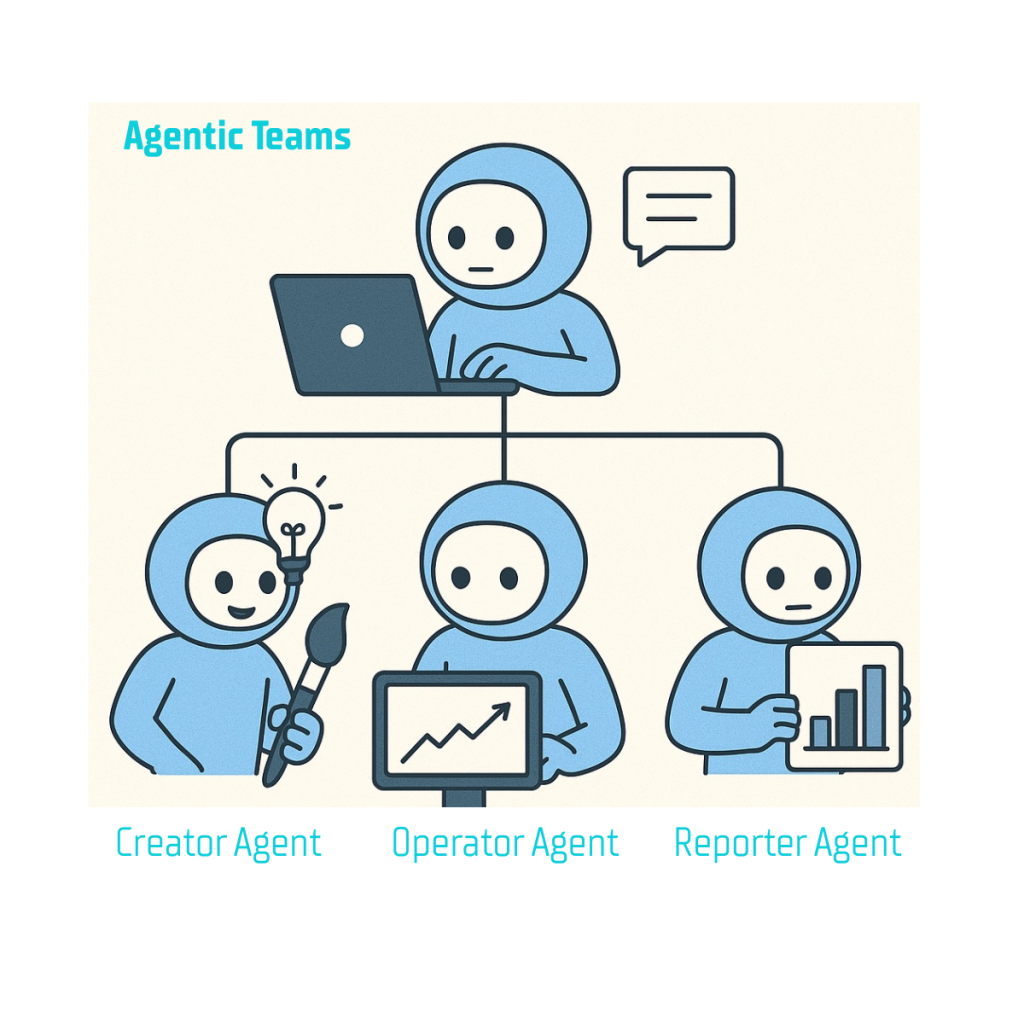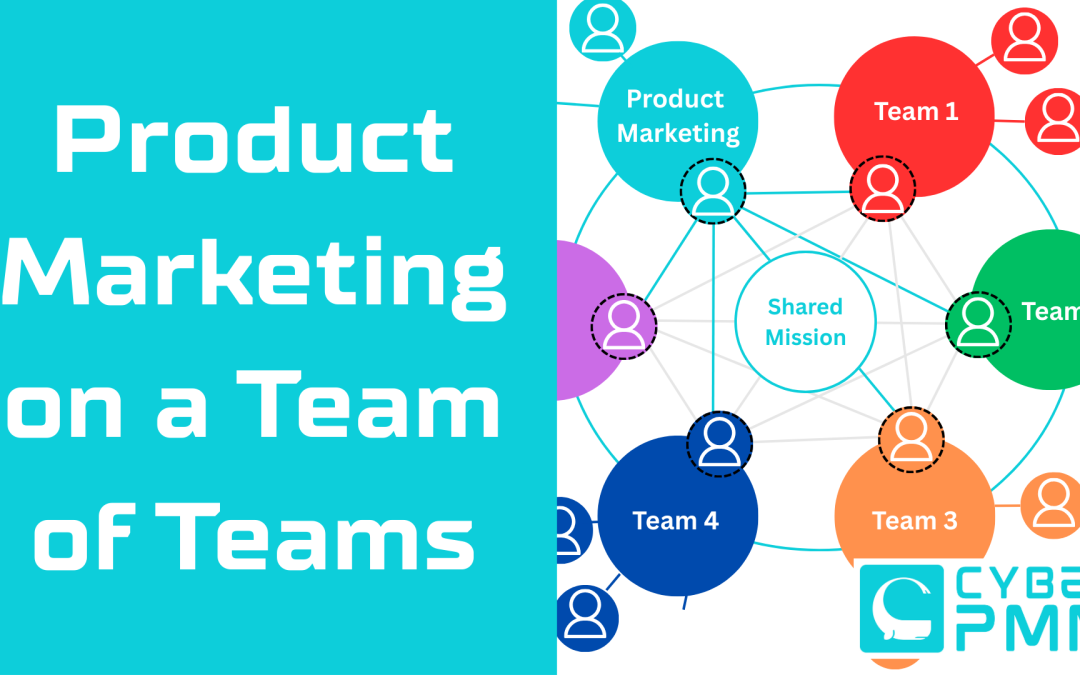Season 3 Series Kickoff
Season 2 Recap: From Frameworks to Force Multipliers
Season 2 of Cyber PMM’s content and podcast was had a ton of content across the following topics:
- AI & Automation: From agent workflows to tooling that takes your time back.
- Launch Muscle: Real-world systems to bring order to chaos.
- Buyer-Centric Content: Creating trust-driving content that actually gets used by LLMs.
- Industry Voices: Experts like Dr. Chast Cunningham, Martin Naydenov, Chris Steffen, Chris Crowley and Ani Gottiparthy.
Each piece added weight to the foundation of what makes a modern PMM successful. But techniques alone won’t win markets. Playbooks don’t launch products. Content doesn’t distribute itself. Teams do. Which leads us to Season 3.
Season 3 Kickoff: Enter the Team of Teams Era
Introduction
In case the title didn’t give it away, Season 3 is all about teams. The real world is about complex webs of cross-functional functions. The bigger the organization, the more complex. I currently work at Cisco, an organization with over 80,000 employees, so perhaps I’m biased in writing this for larger organizations. Yet even within my experiences at startups and scaleups, I had to deal with agencies or other teams or even the reality of covering multiple functions myself.

The reality is that you have to deal with people (or agents) in brand, campaigns, content, sales, product, field, web and so on. In many cases, these are people who don’t report to you. In my 12+ years in this business, nobody has ever reported to me on paper! Yet I’ve handled massively complex projects without this authority. I had to work with people who often didn’t know me before I sent the first introduction message. Yet our market success and the success of your product depended on broad collaboration across teams.
This is why when I read the book Team of Teams, I was very intrigued and thought, “Wait, could this apply to Product Marketing?”
What is ‘Team of Teams’ Anyway?
This season is titled “Team of Teams”—inspired by the organizational model made famous by Gen. Stan McChrystal and reimagined for the chaos of bringing products to market in cybersecurity for product marketers. The core idea is simple: traditional org charts break under modern complexity. You don’t win by optimizing for efficiency anymore. You win by becoming adaptable.

Here’s how it works:
1. Adaptability beats efficiency
The old model was built for stability. Clear roles, chains of command, tight processes. That structure falls apart when the environment keeps changing (sound familiar?). In high-speed, high-chaos situations, the ability to shift, adjust, and act quickly matters more than squeezing every ounce of efficiency from a static system.
2. Shared consciousness, empowered execution
McChrystal’s shift was radical. Instead of the military relying on slow command-and-control systems, they created real-time information sharing across all teams. Everyone had access to the same context, not just top brass. That allowed small, autonomous units to act without waiting for permission. They could move fast because they knew what mattered.

3. Trust is what scales, not control
You don’t speed things up by adding more layers of oversight. You scale by building trust. Leaders become orchestrators, not bottlenecks. They set the mission, ensure alignment, then let the team figure out the how. The result is speed with purpose.
4. Networks over pyramids
Instead of a top-down pyramid, the organization becomes a living network. Teams connect across disciplines, roles, and priorities. They collaborate dynamically, solve problems in real time, and self-organize when needed. This structure isn’t just flatter. It’s smarter.
Bottom line: Team of Teams is about replacing rigid control with fluid coordination. It’s a playbook for leading in complexity, whether you’re running a combat unit or as I’m proposing – for driving a product to market in cybersecurity.
Teams Now Include AI Agents
Thanks to agentic AI, teams don’t always mean people. In smaller orgs or lean startups, your ‘team’ might be a combination of tools, workflows, and AI agents. Or it might be 4 people covering all of Marketing, but managing 5 agents each. Agile operators today are combining the power of generative AI with PMM process knowledge to form “agent-based” teams.
You might have a content generation agent writing blog drafts, a market research agent summarizing customer behavior, and a competitive research agent scanning the market while you sleep. These aren’t teammates in the human sense but they are part of your team. The same rules apply: clear objectives, defined inputs and outputs, clear R&R, and mutual accountability.

Just because the other player in the workflow is an AI agent doesn’t mean orchestration goes out the window. In fact, it becomes even more important. PMMs are now (or will soon be) managing systems. And systems require clarity and integration.
So as you read/watch this season, remember: your team of teams might include AI teammates. Leadership still matters. Decision-making still matters. You still need to guide, connect, and structure these players with the same or even more intentionality you’d apply to humans.
Building a Team of Teams Requires Leading Without Authority
Step Into the Void
There’s another great book called Leading Without Authority. You don’t need to read the book to know the experience: you have to lead teams when zero people report to you on paper. Still, the project has to go out the door. And everyone expects you to figure it and get others to do work.
In Cyber, people quit often. Roadmaps shift. Layoffs happen. It’s the nature of the beast. You hardly hear of universities training for this reality though. A good course worth giving would be, “chaos simulation for product marketers,” and have actual PMMs design it. But that likely won’t happen. Maybe I’ll do that one day!
Authority Is Overrated
Most PMMs are individual contributors (ICs). We likely won’t see our name on an org chart with a team below it. We don’t own a budget. We can’t assign tasks. But that doesn’t mean we don’t lead.
We lead by influence. By clarity. By removing ambiguity. We lead by keeping projects moving forward while others stall out in confusion. We are the stabilizer in chaos.
We also shape product narratives. We drive how the market sees our product. We build the materials sales uses to win. That’s real leverage.
In most GTM efforts, most of the resources we need will sit outside our reporting line. The percentage increasing as org size increases. We depend on design, product, sales engineering, and demand gen teams—all of whom have their own priorities. We won’t lead them through hierarchy. We’ll join them on a common mission through trust, speed, and sharp execution. We’re all part of a team of teams.
What It Actually Looks Like
We’re Not the Hero, Sorry
Sorry to break it to you, but this model means that PMM is not the hero. We’re playing on a team and have a specific role like every other team. PMM doesn’t center ourselves—we center a shared business mission. In nearly all cases that mission will be the success of our product in market, which is mainly measured by customer growth and product adoption.
Sure, we sit at the intersection of product, sales, markets, and customer experience. And our job is sometimes to make the right things happen, in the right order, across the right teams.
But we also need to take a backseat or pass the ball. This constant struggle for product marketers to feel as though we have to be in control NEEDS TO STOP. To operate in a complex, fluid system, we have to fit into the network of teams around us, sharing the mission and playing our part.
Our part? Well that’s been the topic of many other Cyber PMM articles, especially in the Core Function series. But simply put, we are a nexus into the market and target customers, so we help define and nail down our product’s in-market narrative. Focusing on narrative-to-audience development is most critical. And from there, other dominoes can fall.
Make Work Bigger Than You
When you ask for support, don’t frame it around your to-do list. Frame it around impact.
Always bring it back to customer value, pipeline, or strategic objectives. When you show how your work serves the larger mission, people are far more likely to lean in.
Clarified R&R
Effective teams know who does what. Stupid teams trip over each other. It’s like basketball. You can’t have two players driving the ball at the same time. Or fighting each other for a rebound. Or two wide receivers running the same route. You get it.
Too many employees do the work of others just because they’re put on the spot on calls and want to avoid being embarrassed. But did you know that’s actually selfish? It’s selfish to do the work of other teams. Why? You’re doing it because it makes you feel and look better, like a hero.
Even in flat orgs or early-stage startups, process is power. So stop speaking cryptically, especially if you’re a team leader. Leading this way destroys trust and moral, and results in everyone guessing what the ‘fearless leader’ is thinking. Nothing worse for productivity than a leader that tries to take on other team’s jobs to gain power or status.
This is like when Michael Jordan joined Phil Jackson’s triangle offense. The Chicago Bulls went from a team that had a high-scoring all-star and lost in the playoffs every year, to a team that won 6 championships.
Quick Tactical Tips
To play our role on the Team of Teams, here are some quick tactical tips for success:
- Communicate Relentlessly: Prevent chaos with proactive updates in Slack—never hinge your project on a single call.
- Use Slack Like a Command Center: Work out loud in public channels to boost visibility, accountability, and alignment.
- Calendar Ruthlessly: Decline distractions and avoid useless calls at all costs. Only meet to solve real problems.
- Say No With Grace: Filter tasks through impact and ownership—say no respectfully when it’s not yours to carry.
- Act with Urgency: Don’t let slow replies or vague delays stall progress—follow up, set deadlines, and keep momentum alive.
Setting the Table: Who You’ll Learn to Rally This Season
This season, I will break down how to work with every cross-functional team or agent that product marketers interact with. We’ll explore how to collaborate, reduce friction, and accelerate delivery with each of them (bandwidth warning: I might need to merge a few of these into a single article):
- Campaigns & Demand Gen – Aligning on campaign priorities.
- Web / Digital – Reflecting the product narrative where it matters most: your site.
- Brand & Creative – Getting assets shipped.
- Content Marketing – Turning messaging into thought leadership.
- Corporate Messaging – Staying consistent across narratives.
- Solutions Marketing – Aligning use cases and keynotes with product reality.
- Technical Marketing – Equipping SEs and demo environments.
- Competitive Intelligence – Converting raw intel into revenue plays.
- Regional / Field Marketing – Localizing without losing the thread.
- Analyst Relations – Influencing the influencers.
- Growth Marketing – Fitting brand messaging into an experimentation loop.
And yes—along the way, we’ll show how AI agents and tools can slot into or replace these workflows, too.
Conclusion: Becoming a Team
This season will give you:
- Real tactics for joining a cross-functional team of teams
- Frameworks for aligning human and AI contributors
- Templates you can clone and ship
- Field-tested stories to remind you: you’re not alone
Let’s build your team of teams.
⤵️ Join the conversation with other Cyber PMMs
- Subscribe to the newsletter on LinkedIn or Substack. (You can also subscribe directly below.)
- Follow Cyber PMM and/or me on LinkedIn.
- Subscribe to the YouTube channel.
- Subscribe to the Podcast on Spotify or Apple.
- Follow on X and @Cyber_PMM on Instagram.


